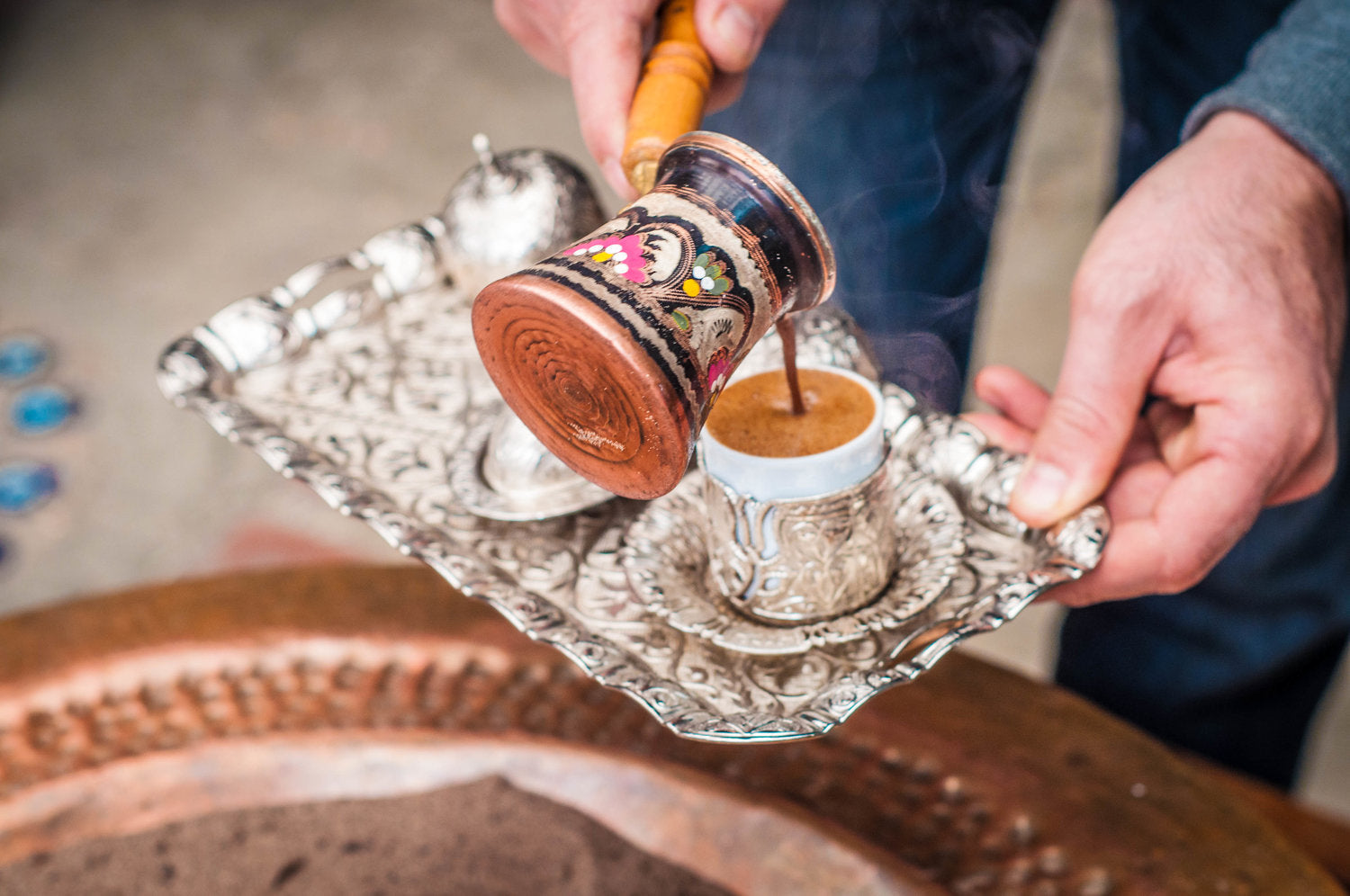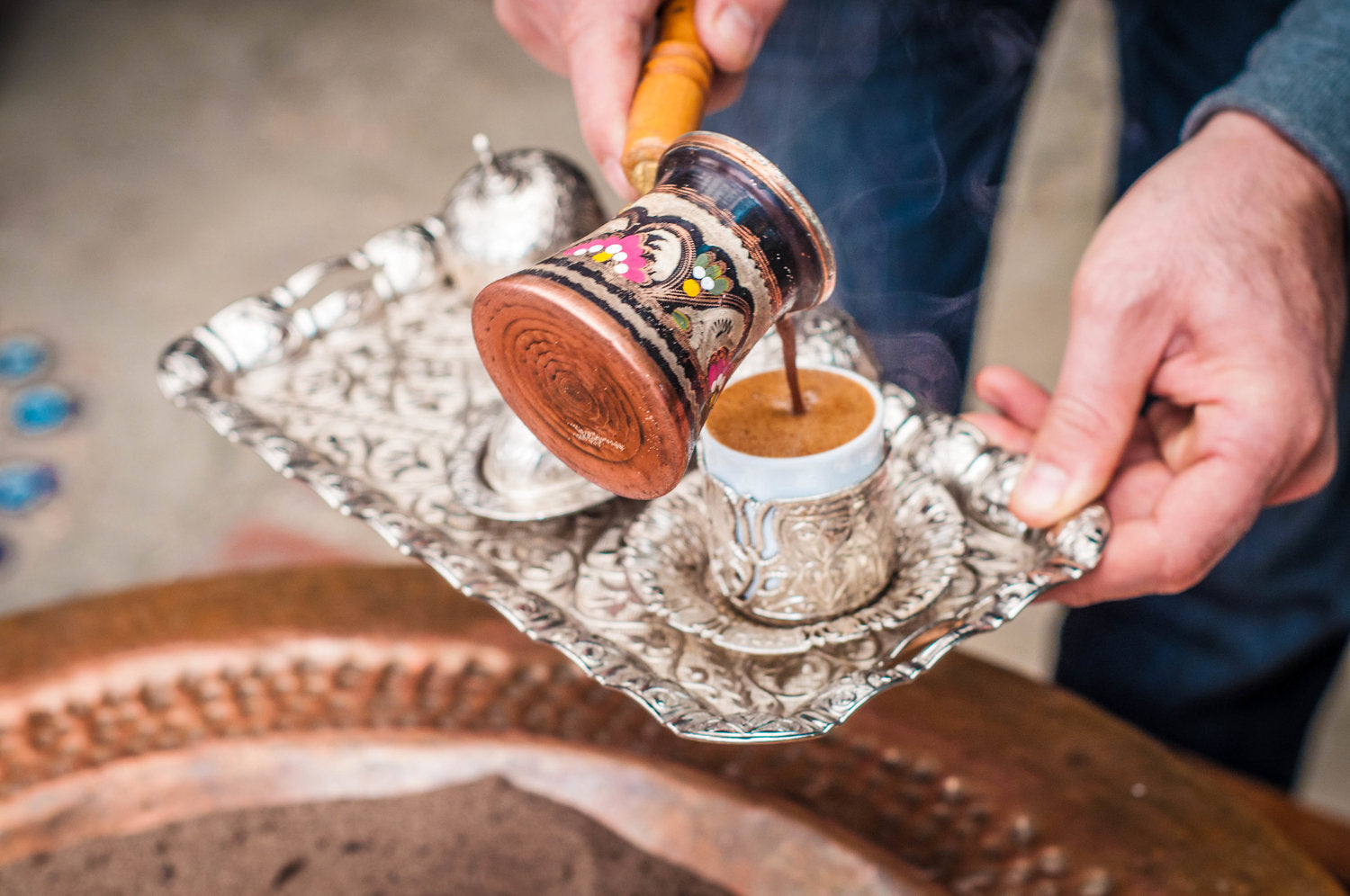Turkish coffee, a cultural gem that transcends mere caffeine consumption, holds a special place in the hearts of coffee enthusiasts worldwide. In this article, we'll delve into the rich history and time-honored traditions surrounding Turkish coffee, exploring its origins and the unique preparation methods that make it a distinctive and cherished beverage.
A Glimpse into Turkish Coffee's Past:
The story of Turkish coffee dates back to the 15th century Ottoman Empire, where it quickly became an integral part of social and cultural gatherings. Legend has it that the first coffeehouse in Istanbul opened its doors in 1475, becoming a hub for intellectuals, artists, and ordinary citizens seeking lively conversations and intellectual discourse over a cup of this magical elixir.
Traditions That Withstood the Test of Time:
Turkish coffee is not merely a drink; it's a ritual, a symbolic experience passed down through generations. In Turkish culture, offering coffee to guests is a gesture of hospitality and friendship. The brewing and serving process is steeped in tradition, from the choice of coffee beans to the preparation method and the iconic presentation in small, ornate cups.
The Art of Preparation:
Turkish coffee preparation is an art form, requiring patience and precision. Here's a step-by-step guide to brewing the perfect cup:
-
Selecting the Coffee Beans: Turkish coffee is typically made from Arabica beans, finely ground to a powder-like consistency. The quality of the beans greatly influences the flavor, so choose a high-quality, freshly roasted variety.
-
Grinding the Coffee: The key to authentic Turkish coffee is the ultra-fine grind. The coffee should be ground to a powder almost as fine as confectioner's sugar, ensuring a smooth and rich texture in the final cup.
-
Measuring: Use a special Turkish coffee pot called a "cezve" to measure the coffee, water, and sugar (if desired). A standard ratio is one heaping teaspoon of coffee per 3 ounces of water.
-
Adding Water and Sugar: Combine the coffee, cold water, and sugar (optional) in the cezve. Stir well until the mixture is homogeneous.
-
Brewing: Place the cezve over low heat and let the coffee slowly come to a boil. Be attentive, as Turkish coffee is notorious for boiling over quickly. Allow it to froth but remove it from heat just before it boils over.
-
Serving: Pour the coffee into small, demitasse-style cups, grounds and all. Traditionally, Turkish coffee is served with a glass of water to cleanse the palate.
Turkish coffee is not just a beverage; it's a journey through time, a reflection of cultural heritage, and a testament to the enduring traditions of a bygone era. By embracing the history, traditions, and meticulous preparation methods of Turkish coffee, you embark on a sensory experience that transcends the ordinary – a journey that connects you to a world where every sip is a celebration of centuries-old customs and warm hospitality.



